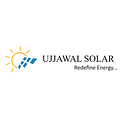Comprehensive Guide to Monocrystalline Solar Panel
Solar panels are typically made up of many solar cells connected in a specific arrangement to form a module. These modules are then combined to create a solar panel. When exposed to sunlight, the solar cells generate direct current (DC) electricity, which can be converted into usable alternating current (AC) electricity with the help of inverters. Solar panels are commonly used to harness renewable energy for residential, commercial, and industrial applications, contributing to efforts to reduce reliance on fossil fuels and decrease greenhouse gas emissions

Monocrystalline solar panel
A monocrystalline solar panel is a type of solar photovoltaic (PV) module made from monocrystalline silicon. The key characteristic of Mono perc crystalline solar panels is that they are constructed from a single crystal structure of silicon, which results in a more efficient and uniform flow of electrons, leading to higher power conversion efficiency.
Here are some key features and characteristics of monocrystalline solar panels
- Material: Monocrystalline solar panels are made from high-purity silicon ingots that are sliced into thin wafers. These wafers maintain a consistent crystal structure throughout the entire panel.
- Efficiency: Monocrystalline panels are known for their high efficiency in converting sunlight into electricity. They typically have efficiency rates ranging from 15% to 22%, with some premium models exceeding 22%.
- Appearance: Monocrystalline panels often have a sleek black or dark appearance due to the way the silicon wafers are manufactured and arranged. This is considered aesthetically pleasing, making them a popular choice for residential installations.
- Space Efficiency: Solar panels are space-efficient, meaning they can generate more power in a smaller area compared to other types of solar Plates for Houses like polycrystalline or thin-film.
- Durability and Lifespan: Monocrystalline solar panels are durable and have a long lifespan. Most manufacturers provide warranties ranging from 25 to 30 years or more.
- Cost: Monocrystalline panels are generally more expensive to manufacture than polycrystalline or thin-film panels. However, their higher efficiency can make them more cost-effective over the long term, especially in applications with limited space.
- Performance in Low-Light Conditions: Monocrystalline panels tend to perform well in low-light conditions, making them suitable for areas with occasional shading or cloudy weather.
Conclusion — monocrystalline solar panels are a premium choice for those seeking a high-performing, durable, and aesthetically pleasing solar energy solution, especially in scenarios where space is at a premium. Advances in technology continue to refine and improve the efficiency and cost-effectiveness of monocrystalline solar panels.
